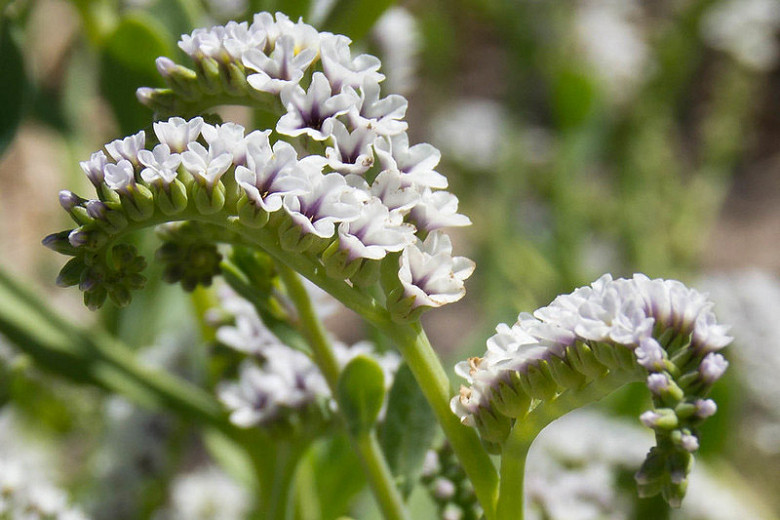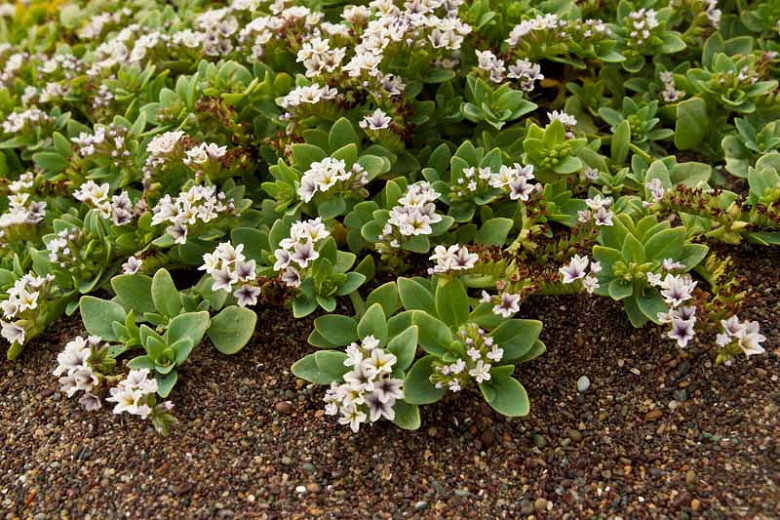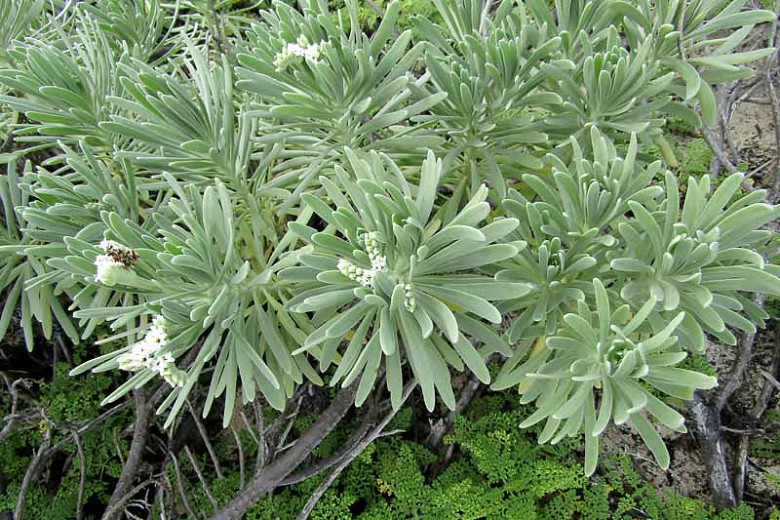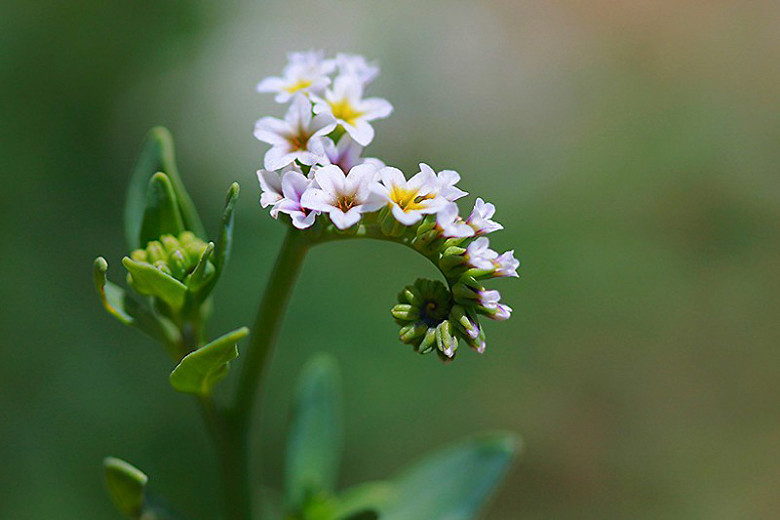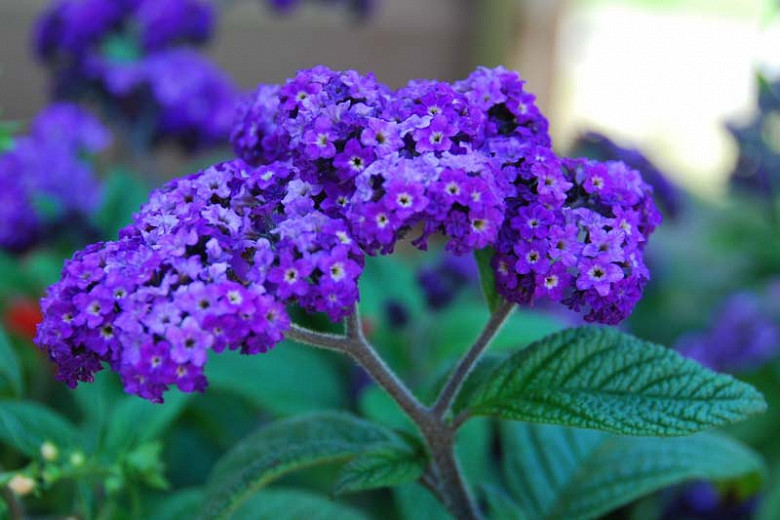Heliotropium curassavicum (Salt Heliotrope)
Native to most of North and South America, Heliotropium curassavicum (Salt Heliotrope) is a perennial plant in its native habitat but is usually grown as an annual in colder climates. It is a sprawling plant with much-branched stems and fleshy, lance-shaped, bluish-green leaves that are thinly covered with a whitish powder. Tiny white flowers with yellow throats are produced along a gradually uncoiling stalk from spring to fall. Often paired, they turn purple as they age. There are between two and four clusters per stem. Salt Heliotrope is a butterfly magnet and a variety of butterflies regularly visit the flowers. It is also especially valuable to native bees. Each flower produces a fruit that separates into 4 nutlets. The seeds are favored by birds. Salt Heliotrope spreads by shoots arising from the wide-spreading roots and by self-seeding. While used as an ornamental, it is also used as a medicinal herb. Its dried roots are ground into a powder and applied to sores and wounds. The ashes of the plant are used as a salt substitute. A great candidate for rock gardens and coastal landscapes.
- Grows up to 12-18 in. tall (30-45 cm). Heliotropium curassavicum spreads by seeds and vegetatively from adventitious root buds.
- Performs best in full sun in dry, sandy, gravelly, slightly alkaline soils. Highly drought tolerant, it tolerates saline soils and waterlogged conditions.
- Perfect addition to coastal gardens or rock gardens.
- No serious pest or disease issues.
- Regarded as an aggressive weed in disturbed areas along the Mediterranean Basin and the Nile Delta, where it is regarded as a serious ecological and agricultural problem.
- Given the toxic nature of Salt Heliotrope, ingestion is not advised.
- Toxic to horses.
- Native to the Americas, where it can be found from Canada to Argentina.
Requirements
| Hardiness | 9 – 10 |
|---|---|
| Plant Type | Annuals, Perennials |
| Plant Family | Heliotropium – Heliotrope |
| Exposure | Full Sun |
| Season of Interest | Spring (Early,Mid,Late)Summer (Early,Mid,Late)Fall |
| Height | 1' – 2' (30cm – 60cm) |
| Water Needs | Low, Average |
| Maintenance | Low |
| Soil Type | Loam, Sand |
| Soil pH | Acid, Alkaline, Neutral |
| Soil Drainage | Well-Drained |
| Characteristics | Showy |
| Native Plants | United States, California, Midwest, Illinois, Kansas, Missouri, Nebraska, North Dakota, South Dakota, Northeast, Delaware, Maine, Maryland, New Jersey, New York, Pennsylvania, Pacific Northwest, Idaho, Oregon, Washington, Rocky Mountains, Colorado, Montana, Utah, Wyoming, Southeast, Alabama, Arkansas, Florida, Georgia, Louisiana, Mississippi, North Carolina, South Carolina, Virginia, Southwest, Nevada, Arizona, New Mexico, Oklahoma, Texas |
| Tolerance | Salt, Wet Soil |
| Attracts | Bees, Butterflies |
| Garden Styles | Coastal Garden, Gravel and Rock Garden |
